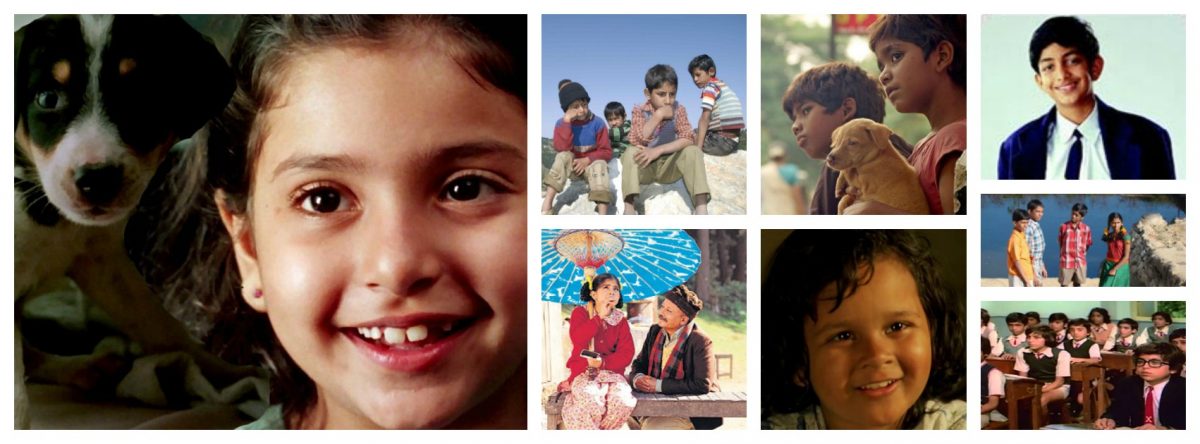
Language: Hindi
Starring: Master Romi, Daisy Irani, Jagdeep, Mohan Choti, Murad, Maruti
Director: PL Santoshi
Rajan, son of a wealthy aristocrat, wishes to experience life without the privileges he was born into. His overbearing father doesn’t like him mingling with his working-class school friends. But separating this tenacious bunch of kids isn’t going to be easy.
The Fifties was a remarkable period for Indian cinema. For a newly liberated country committed to self reliance and nation building, themes like idealism, secularism and democracy permeated in its cinema as well. Rightly called the Golden Age, the decade produced some of the greatest reformist films in Hindi cinema history: Do Bigha Zamin (1953), Jagriti (1954), Shri 420 (1955), Naya Daur (1957), Do Aankhen Barah Haath (1957), Mother India (1957) and Dhool Ka Phool (1959).
In Hindi cinema, the year 1957 stands out for its distinct depiction of emerging India. Along with the empowering troika of Naya Daur, Do Aankhen Barah Haath and Mother India, there was Guru Dutt’s subversive Pyaasa, RK Films’ Ab Dilli Dur Nahin questioning injustice, and writer-director PL Santoshi’s Hum Panchhi Ek Daal Ke that espoused the Nehruvian philosophy of socialism and unity.
In 1954, the I&B Ministry established the National Film Award for Best Children’s Film. Three years later, Hum Panchhi Ek Daal Ke became the first Hindi film winner of the Best Children’s Film.
The film celebrates the spirit of unity through the story about a group of school-goers determined to stick together, come what may. Rajan (Master Romi), the only child of a wealthy aristocrat, is influenced by his school friends’ freedom and self sufficiency. However, his elitist father Rai Bahadur Kailashnath (Murad) is still entrenched in their erstwhile nobility. He doesn’t appreciate Rajan’s fraternizing with working-class boys. The young boy draws his father’s ire when he secretly goes on an excursion with his friends. A furious Kailashnath decides to put an end to this association, but separating these tenacious kids isn’t going to be easy.
Hum Panchhi Ek Daal Ke is in no way monumental, especially when pitted against trailblazers like Pyaasa, Mother India and Naya Daur. Unlike these films, it isn’t as arresting or technically sharp but what worked for the film, and still does, is the endearing story at the centre of it and some delightful performances steering it. The film reminds you of a time, not so long ago, when the enthusiasm for hard work and social responsibility was infectious. For example, when the boys discuss their excursion itinerary, it includes a stopover at a nearby village for shram-daan (voluntary labour). To watch an era when the children and youth of the country were fired up with optimism and hopeful of endless possibilities is refreshing.
Director PL Santoshi’s stint in the industry began with dialogue and screenplay writing. He was also an accomplished lyricist and tasted success early on with hits like Jhoola (1941), Shehnai (1947) and Sargam (1950). His biggest outing would be the 1960 musical hit Barsaat Ki Raat starring Madhubala and Bharat Bhusan. All the songs of Hum Panchhi are written by Santoshi. With N Dutta’s well-matched music, it has some fine outcomes like the leisurely lullaby Bahe Hawa Mand Mand, the peppy road trip number Ek se bhale do — both by Asha Bhosle, and Rafi’s upbeat title track.
The mainstream cinema of the Fifties offered tremendous scope to child artists. They headlined several big banner films like RK Films’ Boot Polish (1954) and Ab Dilli Dur Nahin (1957), Filmistan’s Jagriti (1954), V Shantaram’s Toofan Aur Deeya (1956) and Silver Wings’ Do Phool (1958). Similarly, Hum Panchhi Ek Daal Ke has some of the most notable child actors of the era — Mater Romi, Satish Vyas, Daisy Irani — leading the pack. The ensemble cast also includes veterans like Murad, Maruti (actress Guddi Maruti’s father), David Abraham and Achala Sachdev.
Young actor Satish Vyas, who had previously won accolades as the protagonist in Toofan Aur Deeya, plays Nandu — the conscientious head of the group. As Rajan, the rich scion eager to prove his mettle, Romi is both amiable and sincere. The cherubic actor had broken out with the titular role in KA Abbas’ Munna (1954) and later gained prominence with author-backed roles in Ab Dilli Dur Nahin and Yahudi (1958). The film also features and a very young Jagdeep and Mohan Choti; the duo’s spirited acting is a precursor of the great entertainers they would evolve into. Jagdeep would even go on to be a frequent collaborator with Santoshi’s son, Rajkumar Santoshi’s in films like Andaz Apna Apna (1994), China Gate (1998) and Ajab Prem Ki Gazab Kahani (2009).
Even with the presence of industry stalwarts and promising young talent, the highlight of Hum Panchhi… however is Daisy Irani. One of the most beloved child artists and a star in her own right, Irani was famous for enacting little boy roles and billed as Roop Kumar. As Chatpat, the precocious prankster and the youngest of the pack, she is a riot. Her wildly expressive face and natural charm makes it hard to pay attention to anyone else when she is on screen. Watching this lovely, uninhibited performance now, in the light of Irani’s recent revelation that she was sexually abused (she was just six) by her guardian during the film’s outdoor shoot, is just heartbreaking.
One is just left with an odd poignancy about a film that speaks of everything fair and noble but has such a dark history — that too for its youngest and brightest star.
—
Watch: Hum Panchhi Ek Daal Ke

